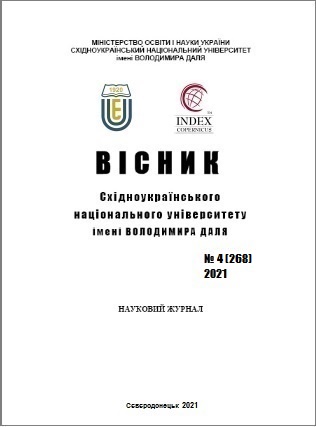The issue of electromechanical energy converters’ classification
DOI:
https://doi.org/10.33216/1998-7927-2021-268-4-26-29Keywords:
electromechanical converters, classification, electrical machines, electromechanical couplingAbstract
The classification of electromechanical converters (EMC), who often use in different branches of industry, based on the principle of electromechanical communication, which has four varieties depending on functional purpose and eleven varieties of classification parameters of EMC, is developed in the article.
There are various options for classifying electromechanical converters. The main types of EMC can be performed within the framework of the so-called generalized electrical machine - an electromechanical converter with two sets of windings - on the stator and rotor. At the same time, with a stationary rotor, the machine has the features of a transformer, with short-circuited rotor windings - an asynchronous machine, when the rotor windings are powered from direct current, with sinusoidal voltages on the stator, a synchronous machine is obtained, and when the stator is powered from direct voltage sources, and the rotor windings from commutator - DC machine. If, in the latter case, the stator windings are supplied with alternating voltage, an alternating current collector machine is realized. EMC classification by the type of windings in combination with the type of magnetic circuit (smooth, serrated, claw-like, eccentric, flexible) is unnecessarily cumbersome. There are, of course, other directions of classification, which can be detailed, for example, according to various structural elements. In addition, a separate (but generally known) direction is the classification of modes (S1, S2 ... S7).
According to the research–based information a table with almost all currently known EMCs was obtained. In accordance with the classification table, all electromechanical converters are divided into power, executive, measuring and single-armature converters horizontally, each of which is also subdivided by functional characteristics. The table is divided into a number of classification parameters vertically. Some traditionally classified features are not included in the proposed system, as they are determined by additional requirements for the electromechanical converter.
References
1. Петров Г.Н. Электрические машины / Г.Н. Петров // В 3-х частях. ч.1. Введение. Трансформаторы: учеб. для вузов. - М.: Энергия, 1974. – 2407 с.
2. Литвиненко А.М. Классификация электромеханических преобразователей / А.М. Литвиненко // Известия вузов. Электромеханика, 2010.- №2. - С. 77-80.
3. Иванов -Смоленский А.В. Электрические машины / А.В. Иванов-Смоленский // Учеб. для вузов. В двух томах. Т. 2. М.: Издательский дом МЭИ, 2006. - 532 с.
4. Копылов И.П. Электромеханические преобразователи энергии / И.П. Копылов // М.: Энергия, 1973 - 400с
5. Литвиненко А.М. Обмотки измеряемой геометрии в электроприводе роботов / А.М. Литвиненко // Электричество. 1985. - № II. - С. 60 – 63.

